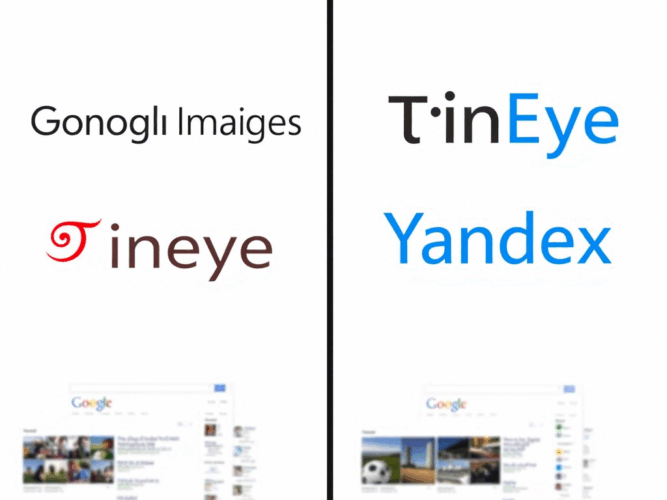Visual content is king in today’s digital landscape. From blog images to infographics, eye-catching visuals can boost engagement and brand recognition. But what happens when your images are shared across the web without proper credit? That’s where Reverse Image Search for SEO comes in.
In this guide, we’ll break down how reverse image search works, how to track image usage, and—most importantly—how to use it to improve your SEO strategy.
What Is Reverse Image Search?
Reverse image search allows you to upload an image or paste its URL into a search engine to find where else it’s being used online. Instead of searching with text, you’re searching with visuals.

Google Images, Bing Visual Search, and tools like TinEye and Yandex can identify websites that use your image or something visually similar. This is especially powerful for brands and content creators who want to monitor how their content travels.
Why Reverse Image Search Matters for SEO
Reverse image search isn’t just a cool trick—it’s an SEO powerhouse. Here’s why:
-
Backlink Opportunities: When someone uses your image without linking back, it’s a missed opportunity. Reach out and request a proper credit link to gain a high-quality backlink.
-
Brand Monitoring: Know who’s using your visuals and in what context. This helps with brand consistency and reputation management.
-
Content Protection: Discover if someone is plagiarizing your infographics or original images.
-
Traffic Insights: Reverse image search can help you identify new sources of referral traffic.
If you’re creating share-worthy visuals like charts, infographics, or branded images, then reverse image search is a must-have SEO tactic.
Best Tools for Reverse Image Search
Here are some popular and reliable reverse image search tools:
1. Google Images
Google’s built-in reverse image search is the easiest to use. Go to images.google.com, click the camera icon, and upload your image or paste a URL.
2. TinEye
TinEye specializes in reverse image search and offers advanced filters and analytics. It’s great for tracking image use over time.
3. Bing Visual Search
Microsoft’s search engine offers strong visual recognition, especially for product images and shopping-related content.
4. Yandex
This Russian search engine has one of the most powerful image recognition capabilities and sometimes finds results that Google misses.
5. Image Raider (Now integrated with Pixsy)
This tool automates the image tracking process and notifies you when it finds your visuals elsewhere on the web.
How to Track and Claim Backlinks from Your Visuals
So you’ve found your image being used without credit—now what? Here’s how you can turn that into an SEO win:
Step 1: Verify Ownership
Make sure the image is original to you. Screenshots, infographics, and branded content work best.
Step 2: Reach Out to the Site Owner
Send a polite, professional email requesting proper credit. Provide a link to your original post and ask them to link back.
Step 3: Monitor Backlink Gains
Use tools like Ahrefs, SEMrush, or Google Search Console to track if the link gets added and whether it boosts your page authority.
Optimizing Visual Content for Better SEO
Before your images ever get shared, make sure they’re optimized to give you maximum SEO benefits.
1. Use Descriptive Filenames
Rename your image files using relevant keywords. Example: reverse-image-search-seo-infographic.jpg.
2. Add Alt Text
Search engines can’t “see” images but can read alt text. Use your focus keyword when appropriate.
3. Compress Images
Use tools like TinyPNG or ShortPixel to compress images without sacrificing quality. Fast-loading pages rank better.
Infographics and unique illustrations are more likely to be shared, increasing your chances of earning backlinks.
5. Use Structured Data
Implementing schema markup for images helps Google understand and display them better in rich snippets.
Common Use Cases for Reverse Image Search
Here are some specific ways businesses and marketers use reverse image search:
-
Content Creators: Monitor where your infographics are published.
-
Photographers: Track unauthorized use of your work.
-
E-commerce: Find out who’s using your product photos.
-
Brand Managers: Ensure brand assets are being used correctly.
-
Bloggers: Discover potential link-building partners who already appreciate your content.
Final Thoughts
Reverse image search for SEO is more than just a way to find copycats—it’s a strategic tool for improving your online presence. By tracking where your visuals appear and turning unauthorized uses into backlink opportunities, you can elevate your content’s performance and authority.
Whether you’re a solo blogger, brand marketer, or SEO expert, integrating reverse image search into your workflow can give your visual content the credit—and power—it deserves.
FAQs
Q1: What is the best tool for reverse image search for SEO purposes?
Answer:
Google Images and TinEye are among the best. Google offers the widest database, while TinEye provides historical data and filtering options. For advanced monitoring, tools like Pixsy or Image Raider are highly effective.
Q2: Can I use reverse image search to detect stolen images?
Answer:
Yes! Reverse image search can show you where your images are being used across the internet. This helps in identifying unauthorized use and requesting proper credit or removal.
Q3: How often should I perform reverse image searches?
Answer:
It depends on your content volume. For active bloggers or brands producing weekly visuals, a monthly check is ideal. For portfolios or long-standing assets, a quarterly search may be enough.
Q4: Does getting image backlinks really help SEO?
Answer:
Absolutely. A credited image with a dofollow backlink improves your domain authority and can boost search rankings. It’s also a form of passive link-building over time.
Q5: Can I automate reverse image search?
Answer:
Yes, tools like Pixsy and TinEye’s API allow automation. They continuously scan the web and alert you when your images appear on new websites.
